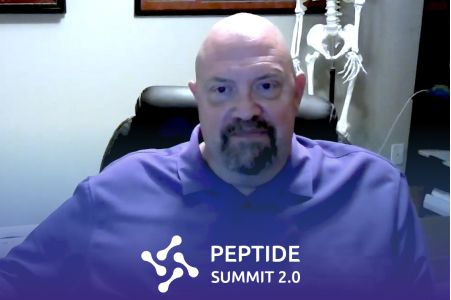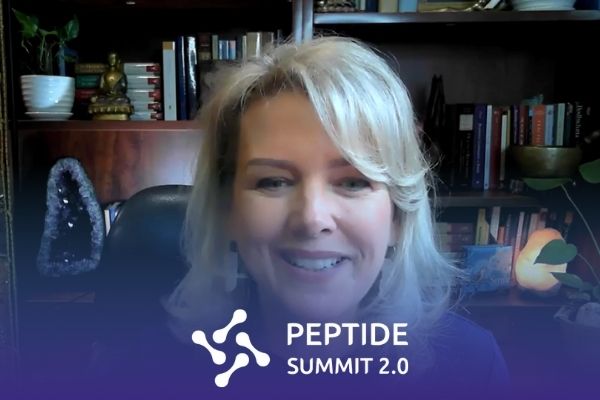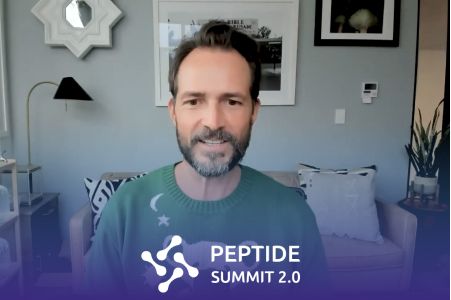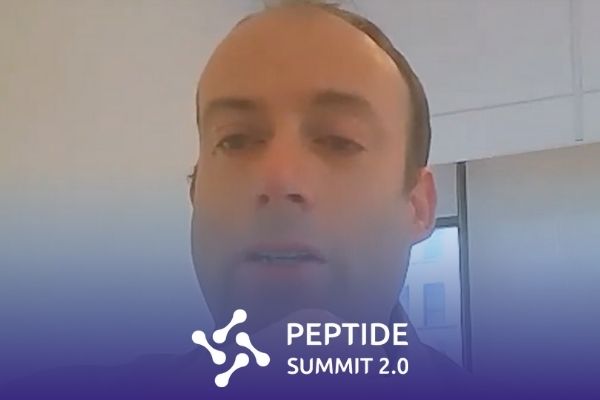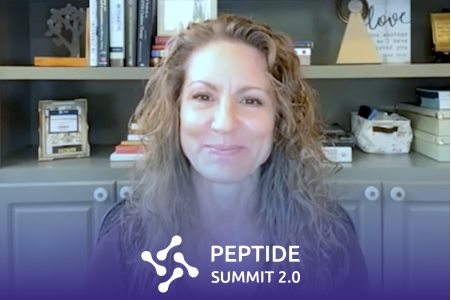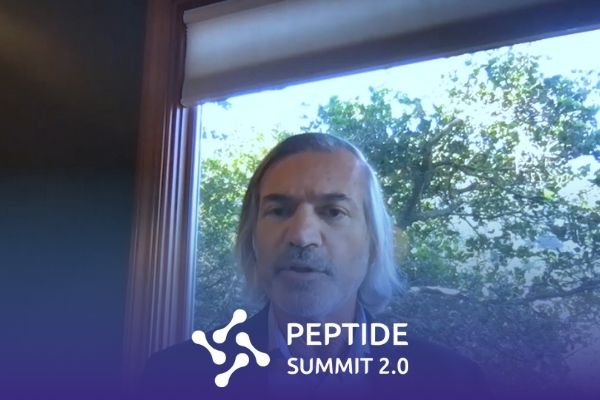Join the discussion below

Dr. Cook is President and Founder of BioReset® Medical and Medical Advisor of the BioReset® Network. He is a board-certified anesthesiologist with over 20 years of experience in practicing medicine, focusing the last 14 years on functional and regenerative medicine. He graduated from the University of Washington School of Medicine... Read More

In 2002 I was lucky enough to have a representative from one of the major joint replacement companies roll a centrifuge into my operating room. I was told, while I was performing surgery, the anesthesiologist could draw the patients’ blood and it could be processed. By the end of the... Read More
- What is the science behind the Perfect PRP Method?
- What can PRP be used for?
- How do Peptides play a role?
- What does the current research say?
- Why patients need to be careful on who if performing their injection?
Related Topics
PeptidesMatthew Cook, M.D.
Hi, my name is Dr. Matt Cook, and welcome to the Peptide Summit. I’m with Jeffrey Piccirillo and he’s an orthopedic surgeon with a lot of history that he’s just been telling me about orthopedic surgery and all the amazing things that he’s done, which I’m fairly aware of because I’m an anesthesiologist. So this should be a good conversation.
Jeffrey Piccirillo, DO
This should be a great conversation.
Matthew Cook, M.D.
Exactly. I’ve been looking forward to. He coaches and trains and supports practices teaching them how to do things like peptides and PRP and regenerative medicine. So it’s an honor, and I’m delighted to talk to you. So thanks for spending some time with us.
Jeffrey Piccirillo, DO
Well, thanks for inviting me. I’m really looking forward to our conversation, especially now, I didn’t realize you were anesthesiologist. So anesthesiologists played a very big role in the beginning of my regenerative medicine career.
Matthew Cook, M.D.
Oh, tell me about that.
Jeffrey Piccirillo, DO
So I was fortunate and I guess blessed. I guess God was looking down over me in 2002, and one of the major orthopedic players decided that they were going to get into the PRP world. And so in 2002, one of my reps rolled a centrifuge into my operating room, which was probably five feet tall and about four feet square, much different than what we have now, but rolled it in and said, “Hey, we have this new technology. “And while you are doing surgery, “we can draw blood and spin it. “And at the end of the case, “you’ll have a syringe that will have a fluid in it “and it’s really high in BMP.” Which is bone morphogenic protein. “And you can add that to your bone graft “and you’re gonna get better bone graft results, “better fusion rates.” And so anesthesiologist would draw a 100 CCS of blood, and we would run it through the machine and at the end of the case they’d give me this yellow liquid and we’d mix it into our bone graft and for spine fusions, complex joint replacements, hard to heal fractures, we’d add this stuff. And from about 2002, 2005, we kind of watched what the bone graft was doing. And it was doing way better than what we were seeing before. And so a few of us kind of started thinking outside the box and saying, “Hey, how else can we use this stuff?” And so I started injecting like edges of my rotator cuff repairs and Achilles tendon repairs. And sometimes if I didn’t have anywhere to use it, I’d just work the edges of my skin incisions to see if they yield better, and we just started using it. And then around 2007, I asked the company if they let me have a second centrifuge to put in my office. And at that point I just started injecting everything.
If somebody came in with tennis elbow, I’d ask ’em if I could draw their blood, I’d spin it, and we’d inject their tennis elbow. And I’d just give ’em the promise that I’ll inject it and if it doesn’t get better, I’ll inject it with cortisone in three months for free. We just started collecting data, and amazingly we were seeing people get better results than with steroids than we were using the PRP. In 2008, I probably… Some people would probably call it a midlife crisis, but I got pissed off at my insurance companies. I got an EOB back from Aetna Insurance for a knee replacement that I did, and they paid me $875. And I decided I was done. I wasn’t gonna take it anymore, I was sick and tired of dealing with insurance companies. So 2009, I went cash and I had this PRP technology and I decided I was gonna try to use it. And just started injecting whatever we could. And that’s where we actually even started injecting joints for arthritis and keeping data. And that brings me now 20 years after my first PRP case. And now I’m teaching, we have about 350 clinics around the country that we’ve installed our protocols. I came up with my own trademarked protocol for PRP, which actually works with the patient for about a month before optimizing their physiology. So they have higher platelet counts, higher marginated stem cells to go to the healing areas and to get better overall results.
Matthew Cook, M.D.
That’s amazing. What-
Jeffrey Piccirillo, DO
I’ll call perfect PRP.
Matthew Cook, M.D.
What kind of stuff do you do in that month beforehand?
Jeffrey Piccirillo, DO
So, first of all, we find it’s really, really important to make sure that they’re off all their anti-inflammatories. You need an inflammatory response for PRP to work, so we counsel them to get off of any prescription NSAIDs, get off even things like fish oil, turmeric, curcumin to make sure that they still have a really hearty inflammatory response. And then we wanna do things to make sure that they’re gonna marginate stem cells. I mean, if you understand the whole process of PRP, you understand that it’s not what we’re injecting that’s causing the healing, what we’re injecting is causing a signal to local tissue. The local tissue then releases a signal to the bone marrow, the bone marrow releases stem cells, and those stem cells go to the area and cause healing. So you need that intact response. And so what we do is we do things like use NAD either in an IV form or in a precursor like Nicotiana amide mono nucleotide to make sure that we can get stem cells marginated. And then we use things like peptides, obviously, peptide summit. So we’ll use, a lot of times we use Sermorelin just a small like a 100 microgram injection four times a week for two weeks prior to the injection to stimulate growth hormone formation to help the healing response. And then we’ve jumped on to Valter Longo that is out at UCLA. He came up with a diet called the proline diet. And if you look at that diet, if you fast or you’re on a fasting mimicking diet for five days prior to drawing PRP, they’ve proven in studies that your marginated stem cells, so your stem cells that are released from your bone marrow, are up about 600% in five days. So that’s what you need to cause the healing. So now you’ve done everything you can in order to point to the right direction to get a good response. You’ve marginated stem cells use an NAD, you’ve used a fasting mimicking diet to marginate more stem cells, you have increased growth hormone from the peptide, so now your body’s ready. I mean, your body is primed to heal. So now you put in a high quality, highly concentrated PRP at least five to nine times concentration of whole blood, and you get a great response. We’re getting responses higher than most of the protocols in the country.
Matthew Cook, M.D.
And then are you continuing with a growth hormone secretagogues after the injection to continue-
Jeffrey Piccirillo, DO
Yeah, usually we’ll do it at least two to three weeks after the injection. Usually by three weeks, the whole cycle has completed, you’re starting to get regeneration. So we make sure that for a month before, and then up to three weeks after, no anti-inflammatory medications. And then for two weeks before, and two to three weeks after, we make sure that we keep the peptides going to keep growth hormone up.
Matthew Cook, M.D.
And then are you, for the geeks in the crowd, are you into leukocyte rich or leukocyte poor or the…?
Jeffrey Piccirillo, DO
That’s a great question. So if you really look closely at the stud… And it depends on the patient. If you look at the studies, leukocyte poor is probably the way to go for almost everything, unless they have a really high grade osteoarthritis and you wanna break down some protein within the joint. And you can use either a leukocyte rich PRP, or you can even go to a higher thing like alpha-2-macroglobulin, which actually is a protease inhibitor, which will bind the MMP-13 in the joint, which is causing the destruction of the articular cartilage. But you can even use a combination, you can use A2M and follow that with leukocyte rich, get a lot of the degeneration stopped, get some inflammation started, and then follow it up with a second leukocyte poor to increase your regenerative process.
Matthew Cook, M.D.
Okay, great. So then this is relating to how much white blood cells are in that PRP.
Jeffrey Piccirillo, DO
Correct.
Matthew Cook, M.D.
So then-
Jeffrey Piccirillo, DO
White blood cells tend to be more inflammatory.
Matthew Cook, M.D.
Right. So we… Go ahead.
Jeffrey Piccirillo, DO
Go ahead.
Matthew Cook, M.D.
Right. So then that’s why it’s nice if you can get away with not using a lot of white blood cells in there ’cause they don’t hurt quite as much.
Jeffrey Piccirillo, DO
Yeah. And it depends on your center fuse, obviously, to get the white blood cells out, you really need a double spin centrifuge to be able to get the white cells out. The study that came outta Japan, I guess 2016. So it’s probably been almost six years ago. But they injected leukocyte rich PRP in the rabbit Achilles, and the tendons fell apart. I mean literally just disintegrated. So white cells can cause enough inflammation that they can destroy collagen.
Matthew Cook, M.D.
So I’m gonna a 100% agree with everything. And then interestingly, there’s another thing you can do. You can take blood out and then you can spin it and get platelets, or you can take blood out and run it through this kind of proprietary filter, that sort of concentrates this other, it’s a protein called alpha-2-macroglobulin.
Jeffrey Piccirillo, DO
Yeah.
Matthew Cook, M.D.
And so then just so people know that that is another thing that’s kind of coming from yourself, and then-
Jeffrey Piccirillo, DO
Actually, you take PRP, so you get your PRP and then you run that through the filter, and then that gives you. Essentially, if you look at that alpha-2-macroglobulin molecule, it almost looks like a Pac-Man. So it has jaws and it has receptors inside. And the MMP-13 protein that breaks down cartilage will bind on those receptors, and then the A2M will actually close up and get rid of them. And Dr. Scuderi that developed that technology was interested in the fact that if we did an ACL reconstruction, even on a perfect, beautiful 16 year old volleyball player, her articular cartilage looks beautiful, she tears her ACL, we know 20 to 30 years down the road, she’s gonna develop osteoarthritis in that joint. Even if we do a perfect ACL reconstruction. Everything is balanced, everything is strong, she’s still gonna develop OA. And we didn’t know why. And he’s the one that found that we have increased amounts of MMP-13 in that joint. And if we don’t do something to bind that, then they’re gonna develop that OA. So it should actually be a protocol that if somebody has an ACL reconstruction eight to 10 weeks after they get an A2M injection to stop that process in the beginning. But orthopedic surgeons aren’t doing that, at least most aren’t.
Matthew Cook, M.D.
Right. And then I would 100% agree with that. And I also do a lot of A2M, and I’ve had very similar experiences with that. And I think is a beautiful way to begin to regulate inflammation in that joint.
Jeffrey Piccirillo, DO
There’s no doubt about it.
Matthew Cook, M.D.
No, probably one of the-
Jeffrey Piccirillo, DO
Especially, say you see a 40 year old female, and all she has is primary grade 2 OA in her right knee. You know that OA is coming from something that’s destroying the pro… Especially if she has had trauma, there’s something destroying the articular cartilage. And if you could do an assay, there’s nobody doing the assays, but if you aspirated that joint and looked at MMP-13 levels, you know they’re gonna be elevated. So she’s the perfect candidate to stop it and it strives.
Matthew Cook, M.D.
And that’s kinda interesting. Different people in different parts of the world, and I’m Silicon Valley and I basically started drawing blood for surgeons to make PRP at about the same time as you.
Jeffrey Piccirillo, DO
I’m sure. There was probably, I think in 2002, there was probably about 30 of us that harvest put a centrifuge in our ORs.
Matthew Cook, M.D.
Yeah. I remember that. And so then we were… I remember a data point ’cause I remember those patients doing better. And so then, because I was helping with follow up with those patients, I’d see ’em and then that was like this first… And they say you have to hear an idea seven times, and so then it was just like you, I’m hearing that idea, hearing that idea. And I was like, you were lucky because you had patients and you were working at clinic. I was working in the hospital. But then systemically, when I think about our healthcare system, I was like, I got to same crisis moment, crisis of confidence at about the same time as you, and I became a medical director of a surgery center. But then I realized this whole system is broken, particularly total joint replacement. And then when you start to think about it, you realize all the stuff that you’re doing, A2M, PRP, other regenerative things. And particularly for that person like you’re talking about, I remember my surgeons almost callously, but with good heart, would be like, “Well, this is just… “We’re gonna do a knee arthroscopy, “but this is just a staging procedure “for a knee replacement.”
Jeffrey Piccirillo, DO
And then they wouldn’t do anything between it.
Matthew Cook, M.D.
Yeah. Well, and-
Jeffrey Piccirillo, DO
Obviously, because the problem is, is it’s not covered by insurance. So if you’re orthopedic surgeon, first of all, you’re gonna have a hard time asking your patient for money to begin with, ’cause all they’re used to paying is a copay. But second of all, if you’re a hammer, everything looks like a nail. So if you’re an orthopedic surgeon, you want to do joint replacements. So you scope ’em, clean ’em out, there’s some scuffing on the articular cartilage, there’s really nothing you can do about it. And you keep ’em on their anti-inflammatory medications, and eventually they’re gonna come and tell you that they need a knee replacement. And that’s just what you learn in residency and that’s what you do. And there’s very few of us that have gotten away from that. But thankfully I think more and more are getting away from it. The problem is, and probably outside of this conversation, ’cause we’re supposed to talking about peptides and how to use them in regeneration, but the problem is, is our healthcare is for the most part run by big pharma. So big pharma doesn’t want you to come off your Celebrex. Big pharma wants you to stay on Celebrex until you die and make that money. And so if there’s something out there like A2M and PRP that can get you off your anti-inflammatory medications, it’ll never become approved by insurance because big pharma doesn’t want it approved.
Matthew Cook, M.D.
Well, This is like the great kinda conversations because it’s interesting to kind of work our way through this, is if I was to say moderate osteoarthritis, that moderate to severe, and then let’s say they would meet criteria in the hands of 90% of orthopedic surgeons they would see for a knee replacement. And then you and I both know exactly, we’ve seen thousands of those people. What percentage of those people do you think you could successfully delay for five years a knee replacement? I guess that would be question number one.
Jeffrey Piccirillo, DO
So moderate to severe OA?
Matthew Cook, M.D.
Yeah, moderate to-
Jeffrey Piccirillo, DO
Grade 3.
Matthew Cook, M.D.
Yeah.
Jeffrey Piccirillo, DO
If you’re gonna grade it. I think that you could delay depending on how aggressive you want it to get. And I’ll explain that in a second. But I think that if you wanted to be really aggressive, you could delay 60 to 70%. I think that if you found people at grade 2, which is just moderate OA, it maybe as high as 80%. Because now there’s technology where you can take very high concentrated PRP, so taking 20 times concentration of whole blood. So starting out with say 120 CCS of whole blood and spitting it down to six. And you can take and inject that interosseous. So you can give them mild to moderate sedation, so you can give ’em some oral versed, oral Vicodin, some nitrous. And then under fluoroscopy, using an MRI as your guide, you can look for the OA lesions on the tibia and on the femoral condyle and you can go into the metaphyseal bone, right underneath it and inject that with highly concentrated PRP. And doing all the other stuff, stopping their anti-inflammatories, putting them on something like Sermorelin, doing NAD IVs to marginate stem cells. But then you can inject right underneath their OA lesion, on the metaphyseal side, right under the articular cartilage. And the studies that came out of Chris and Kinos group Regenexx, they’re showing a decrease in the need for knee replacement by up to 60%.
Matthew Cook, M.D.
So then I’m 100% agree with that. We do that also. So then it’s kinda interesting, I talk sometimes about this idea of different compartments of pain. And so then one would be like the nerve going to the joint, one would be the fascia, one would be like the tendons and ligaments around the joint that can hurt what you could be synovitis but then sometimes what hurts is actually because you have bone marrow edema.
Jeffrey Piccirillo, DO
There’s no doubt about it.
Matthew Cook, M.D.
And so then-
Jeffrey Piccirillo, DO
You can correlate that on MRI, you can often see the bone marrow edema on the MRI and correlate that’s exactly lights up on the tibial side of the Beagle compartment and you’ll see bone marrow edema on the MRI. That’s exact, and they’ll pinpoint… Ask where does it hurt, and they’ll pinpoint that’s their generator.
Matthew Cook, M.D.
So then for people listening, and I know this is Peptide Summit, but this a crucial concept because then diagnostically 1.0 is gonna be figure that out. And so, okay, which one of those compartments is that in? Because basically you can put all of the stem cells or PRP in the whole world into a knee joint. And if they’ve got bone marrow edema, if the knee joint is like this, but they’ve got bone marrow edema in the basically where that is, it’s basically in the bone marrow just below where the cartilage is. ‘Cause I think that bone marrow edema there putting something into the joint, not gonna do anything.
Jeffrey Piccirillo, DO
No, I think, yeah. And I think you have to attack it from both sides. I think that if you’re really trying to… If you’re really trying to save somebody from having a joint replacement, and I’m a surgeon, I did conventional orthopedic surgery for 20 years prior to getting into the regenerative side. So I know the surgery side. But if you wanna keep somebody out of the operating room, you’ve gotta attack literally everything. You’ve gotta make sure that their ligaments surrounding the joint are stable and there’s no pain generators in the ligaments. You’ve gotta make sure that there’s no bone marrow edema, and if you do, you need to inject them interosseous. If they have articular cartilage lesion, then you need to put some PRP into the joint or at least unload the joint with something like AJ, or AJ initially to unload it and then PRP on top of it, ’cause the AJ will often act as a scaffolding for the PRP to work a little bit better. So there’s so many ways of attacking it. And one of my biggest pet peeves is the fact that everyone wants to jump on to this regenerative bandwagon. And there are clinics out there that are offering PRP or prior to all the changes last June 1st from the FDA, stem cell injections or amnion injection or exosome injections and things like that, they wanna jump onto that bandwagon, but they don’t follow the science. They’re not stopping anti-inflammatories, they’re not trying to marginate the patient’s own stem cells. People are walking in, they’re looking at an extra, they’re giving them a shot and they’re sending them out the door, and then the people don’t get better. And the people say they don’t get better because, oh, this stuff doesn’t work.
Matthew Cook, M.D.
It is kinda funny where you’ve got parallel stories going on. I also got involved in taking care of a lot of patients using NAD, and this happened six or seven years ago. And that was in part because we were doing some addiction and then we just kinda got lucky with it. And then we found that when we were doing PRP or when we were doing A2M or when we were doing really anything regenerative, if people did a couple days of NAD and like you working on salvage cycle and working on these other ways of supporting NAD, but then also IVs and also SubQ NAD, all of that stuff seems to help both before and after, I think.
Jeffrey Piccirillo, DO
Yeah. And I think the reason is if you’re looking at the science, all we’re doing is we’re increasing nitric oxide. All we’re doing is we’re generating increased nitric oxide and that’s what’s probably causing the whole thing. Same reason it works in erectile dysfunction.
Matthew Cook, M.D.
And then what did you say your timing is between HA and PRP, how close with?
Jeffrey Piccirillo, DO
I think you can do ’em a week apart.
Matthew Cook, M.D.
Okay. And which one do you like to do first?
Jeffrey Piccirillo, DO
If it wasn’t for the FDA, ’cause the FDA says that if we mix them together, it becomes a new drug. So we’re not allowed to do that. So I think that if it wasn’t for that rule, you could homogenize them. You could take 1.5, two CCS of HA mix it with 2.5 to three CCS of PRP, go back and forth between two syringes, homogenize it and give it as one injection. I think that would work actually really, really well, but the FDA won’t allow us to do that. So I think you could even do them the same day, you could do HA and wait 10 minutes or so, put PRP on top of it, and I think you’d be fine. But typically it expands the joint too much. And we know that the joint capsule is a pain generator, so if you expand the joint too much, they have pain after the injection. And so a lot of times I’ll wait a week, I’ll put a full dose of HA in and then I’ll bring ’em back in a week and I’ll put a full dose of PRP in.
Matthew Cook, M.D.
Okay. That’s interesting. We talked about those white blood cells and inflammation, if you get an injection into the knee and then it starts to swell, and I learned this, it’s kinda interesting, like, you know you have a lot of ideas that you know just clinically. But then when I got an effusion, and then the first thing I felt that pain in the back of my knee, where basically it was pushing the back of that capsule. And then I looked at the next thing I know I saw the fusion, so it’s interesting. But then my right knee had always been my bad knee, and now my right knee’s my good knee. You hear that a lot with people.
Jeffrey Piccirillo, DO
Oh, yeah. There’s no doubt that the science, if you follow the science, it works. The problem is there’s a lot of people out there that aren’t following the science. I retired from clinical medicine about five years ago and really got into developing… I wrote my two books and developed protocols and really started working with other doctors, teaching them how to do it. And then as I saw where the science was going, it really made me sad that people were jumping onto the bandwagon just to make money, which I guess I’m not surprised about. But they were doing something that I’ve been doing for 20 years and put all this time and effort and study into, and they’re just mutilating the science behind it. And people aren’t getting better and they’re blaming the science. And that’s not what it is, they’re just people that are charlatans that are doing bad technology.
Matthew Cook, M.D.
Are you using any peptides orthopedically other than kind of the growth hormones secretagogues?
Jeffrey Piccirillo, DO
Mostly just the growth hormones secretagogues.
Matthew Cook, M.D.
Okay. What other peptides… Any other peptides you’re using a lot clinically?
Jeffrey Piccirillo, DO
Well, we talked a little bit earlier. The other one that I love to use clinically, but kind of outside the regenerative field is I really like to use oxytocin. I use oxytocin as kind of a relaxant. In almost all of my clinics that I consult with, they have ’em at the front desk. And the front desk girls, as soon as somebody walks in the office, gives them a little oxytocin troche to put under their tongue. And it just puts them in that nice relaxed state. So once they do go back to have their injection done, they’re a lot calmer, they’re not worrying about the needle and having the blood drawn.
Matthew Cook, M.D.
You were telling me your wife was using it. I like that story.
Jeffrey Piccirillo, DO
Yeah. I’ll relay that. My wife’s a school nurse. And prior to COVID… Elementary school. And so prior to COVID, she loved her job, and she just loves the kids, and loves what she’s does and has been doing it for a long time. And once COVID hit, the parents kind of just turned on her. And so she’d get a call from the principal and they’d say, “Oh little Kimmy in kindergarten “came down positive for COVID. “So we’ve gotta quarantine her whole class.” And so now my wife’s on the phone calling these parents of 20 kids and the parents are pissed. The parents are like, “Do I have to take two weeks off work “to stay home with my kid?” Well, and, “This is all the hoax “and government’s behind it.” And they’re screaming at her and swearing at her, and she just stressed out. So we gave her a little oxytocin nasal spray. And now she would just give herself a little squirt and calmed her down a little bit. And she didn’t care so much if the parents were screaming at her.
Matthew Cook, M.D.
It’s funny, I always thought, oh, that would be a sweet job to be like a school nurse. And I never haven’t had a… It was always like an idea in the back of my mind that the type of person that’s a school nurse would be a lovely, generally type of human being. And then when you said, “Oh, my wife’s a school nurse.” I thought, and it was the first time I’d heard that since COVID, and I thought, “Oh my God, “that would be a super stressful job.”
Jeffrey Piccirillo, DO
Yeah. Since COVID hit, it completely changed.
Matthew Cook, M.D.
And then PT-141, is that when something you guys were using?
Jeffrey Piccirillo, DO
Yeah. So PT-141. On the other side, so obviously orthopedics is where this all started for me. But over the last five years, Dr. Charles Reynolds and I have become best of friends, talk almost every day. I go to all his workshops and spin PRP and talk about PRP. And so he’s dealing more in the aesthetics and sexual health world of PRP. And he developed vampire facial, which is what made him famous, ’cause Kim Kardashian had it, and actually down in your area, she had it in South Beach in a hotel room. But he also developed the O-Shot and the P-Shot. So the O-Shot is for increasing orgasm in women and for decreasing urinary stress incontinence. And then the P-Shot, Priapus Shot, is for ED. And so PT-141 is a perfect combination to add to that, because it’s increasing the sex drive. And so using a combination of PT-141 and supplementing it with a PRP injection, it’s a home run in people that are struggling. Those injections, it’s amazing because when I first thought about it, first started going and doing some work with him. I had a couple doctors that wanted to go to his train. And one thing he offers is if you bring a doctor to the training, you can attend the training with him. And so I went with a couple doctors and I started listening to this. And it really brings families back together. I mean, because if think about it, God played a little trick on us because, especially for those of us that have been married for a long time, we have a wife that’s had a couple babies and as men old, the girth and the size of their penis goes down. And so now the vagina’s getting bigger, the penis is getting smaller, and so the sex life that we knew 20 years ago is different than it is now. There’s a mismatch. And with these injections, that changes, ’cause now it’ll help tighten up the vagina, it’ll help increase the girth of the penis. And now everything is working better, helps with ED, helps increase heightened orgasm. So now you can take somebody that you’ve been married to for 20 years and now your sex organs are rejuvenated and now you’re back the way you were when you first met. And then adding PT-141 to that is, I mean, it’s a home run. It really changes people’s lives, it really brings people back together.
Matthew Cook, M.D.
I also took his course and went through the teacher training that he has. And I was about to quote, when you talked about bandwagon, I was about to quote a Bob Dylan quote. And I love going-
Jeffrey Piccirillo, DO
That’s his favorite. That’s one of his favorites.
Matthew Cook, M.D.
When you go to the class, they were playing “Desolation Row” which if people haven’t listened to it-
Jeffrey Piccirillo, DO
On a record.
Matthew Cook, M.D.
Yeah. And then-
Jeffrey Piccirillo, DO
Which results… ‘Cause he only plays vinyl.
Matthew Cook, M.D.
Right. And so then I’m… And basically you could argue that “Desolation Row” might be the greatest Dylan song, I don’t know, from a certain perspective. I actually, I’m gonna do a podcast where I’m gonna take basically an hour and then I’m gonna explain “Desolation Row” from the beginning to the end, and what that means. But basically I went in there and I met him and I was like, “Oh my God, I’m gonna love you for the rest of my life.” Like I really, really like him. That is-
Jeffrey Piccirillo, DO
I was just there. I just came back yesterday.
Matthew Cook, M.D.
Oh really?
Jeffrey Piccirillo, DO
Yeah. I taught with him Thursday and Friday, we did a workshop in Fairhope and I flew back yesterday.
Matthew Cook, M.D.
I was down there for Mardi Gras, so that was kind of interesting. But that psychology that he has is very great. And I think he’s really good at taking couples and bringing them back together.
Jeffrey Piccirillo, DO
He really does. I mean, it’s amazing how… I mean, and he really cares about that, I mean, really, truly in his soul cares about that relationship. And he gets some bad press because he’s the sex doctor. And especially from sex therapists, female sex therapists hate him because their complaint is he’s just making vaginas a better place to put a penis. And so he gets a lot of bad press from the sex therapist. But he really does, he really cares about making families love each other again, making a husband and wife close again. And he’ll tell stories about… He does a lot of work with lichen sclerosis. And for those of you that are listening to this, lichen sclerosis is a autoimmune disease that attacks the vagina, attacks the labia on the clitoral hood. And these women have sores that crack and the opening of the vagina gets really small and almost makes it impossible for them to have intercourse with their husband or loved one. And he’s on some private forums, and he’ll get messages from women that will say, “I was sitting on the couch last night “and my husband reached over to hold my hand “while we were watching a show and I pulled away “because I didn’t want him to get excited “with me holding his hand, “because I knew there was nothing I could do about it.”
Matthew Cook, M.D.
Well that… And so then that just goes to show, it’s kind of interesting that similar, that the orthopedic experience, if you get tennis elbow and then you put PRP even superficially over that common extensor tendon, that if there’s a tear into that common extensor tendon, it’s gonna start to heal that, the fascia and the nerves and the tendon there. And if somebody has lichen sclerosis, it’s also doing the same thing in the vagina.
Jeffrey Piccirillo, DO
Yeah. PRP works beautifully on things lichen sclerosis. There are actually some doctors, Dr. Alex Reynnolds, same last name with two Ns in San Antonio, Texas, who actually is Charles Reynolds fiance now, which is kind of bizarre that they have the same last name. But they’re not related, they checked it on the DNA studies. But she’s an OB/GYN, and she’s actually microneedling PRP into these lichen sclerosis areas, and just changing women’s lives. I mean, just doing some amazing, amazing stuff with it.
Matthew Cook, M.D.
Yeah, that’s amazing. But I would say that another thing that happens is so many women in their 50s but especially 60s and 70s and 80s will have urinary tract infections with intercourse. And so then what happens is, is basically that O-Shot, is you’re basically putting a needle in between the vagina and the bladder and starting to heal that fascial plane, just like what we would do if we were trying to heal a fascial plane, basically somewhere…
Jeffrey Piccirillo, DO
Yeah. Or even like a rotator cuffs. Between the two bones in the shoulder, we inject that rotator cuff and it heals, and makes it thick and strong. Again, takes the pain away. Same thing can happen in the vagina.
Matthew Cook, M.D.
And then basically my sort of perspective is gonna be, and this would maybe just for the future, but then fundamentally peptides are gonna be an analogy to PRP and then are gonna be functional and helpful in sort of all of those places.
Jeffrey Piccirillo, DO
I agree with that. I agree, I think there’s ways of using them more and more. I’ve had some docs experimenting using them interarticular. And I think there’s probably some use, I think it needs to be studied more. I’m only using them subcutaneously because I’m trying to stimulate it more over the body overall than just in the joint. And I think there’s more receptors in the fat and in the subcutaneous tissues than there actually is in the joint capsule. So I think we can get a better response for what I’m looking for, but I think there’s probably some research that needs to be done and seeing what we can do with interarticular peptide injections.
Matthew Cook, M.D.
Yeah. I think it’s going to be definitely, that’s gonna be a very good direction. It’s something we have some experience with. The other thing about the P-Shot is, what I found is this certain problems, basically there’s not any one cure, and the treatment is combination of four or five things.
Jeffrey Piccirillo, DO
I think you’re absolutely right.
Matthew Cook, M.D.
And then for the male erectile function, that’s gonna be a big one, that’s a multimodal thing. And the interesting thing is that PT-141 is acting centrally in the brain to cause erection. And it will increase female arousal as well, so it’s kinda like two way thing. And so then when you begin to think about now, okay, so we have a peptide that can impact blood flow and arousal and stuff like that, and then we have regenerative things that we can do. And so then it starts to add one plus one is four.
Jeffrey Piccirillo, DO
Yeah. And also the other thing that you can, and I sort of brought this up when we were talking about my protocol for joint and musculoskeletal injections, I do a lot of shock wave therapy because that also locally, it increases nitric oxide. So it works locally to increase nitric oxide, which will help mobilize the bone marrow stem cells to the area. And it also causes some inflammation. And so it helps using it the first two or three weeks prior to your regenerative injections. In the penis, Richard Gaines, that developed the GAINSWave protocol in the penis, kind of works the same way, it increases nitric oxide in the penis. So we know that nitric oxide is important for erection, so it helps with that. But it also will break up any small intervascular occlusions, so it’ll increase blood flow to the penis. And so it kind of works both ways there. So if you’re breaking up any little occlusions, you’re increasing nitric oxide with a shock wave, you’re using PT-141 centrally, you’re putting PRP into the corpus cavernosa to once again, we know PRP is very high in VEGF, vascular endothelial growth factor. So now you’re developing new blood vessels, which are gonna engorge the corpora, make the erections harder. So now you’re attacking it from four different ways, you’re increasing nitric oxide, you’re breaking up any little occlusions, PT-141’s working centrally, PRP is increasing blood flow. So now you’ve got four sided attack way better than giving somebody the little blue pill.
Matthew Cook, M.D.
I’m a 100%. When you do shock wave before PRP on the knee, how many times will you do it?
Jeffrey Piccirillo, DO
I’ll do it two to three times a week for three weeks.
Matthew Cook, M.D.
And do you do it for, if you’re gonna go into articular, are you doing like attachment muscles or where do you do it?
Jeffrey Piccirillo, DO
Yeah, I’m doing attachment muscles and I’m doing joint capsule and ligament structures. ‘Cause I’m doing medial collateral, later collateral, patella tendon, joint capsule, usually hamstring insertions, quadricep insertion at the superior pole of patella.
Matthew Cook, M.D.
And so then if we go back to that idea that we were talking about these different compartments of pain. And then my philosophy is that you have to… If you don’t address where the pain is and what the actual generator is, then you’re not gonna get better.
Jeffrey Piccirillo, DO
Absolutely.
Matthew Cook, M.D.
And then somebody may have a problem in their joint, but part of that problem in the joint, maybe because just the last thing you said, if they have a pain at the quadriceps where it attaches to the patella and then they have dysfunctional movement there, then that may be-
Jeffrey Piccirillo, DO
If your VMO attachment on the superior medial side… Or superior medial side of your patella is dysfunction, and now your VMO is not firing, now your patella’s gonna start tracking laterally. As your patella tracks laterally, it’s gonna start taking off articular cartilage to the lateral facet, and so now you’ll hold dysfunctions there. So if you don’t treat the original problem, which is tendonitis at the insertion of the VMO, then you’re not gonna solve the overall problem, even if you put PRP into the joint.
Matthew Cook, M.D.
Okay. So then I’m gonna be 100% with you on all of that. And then even if you’re not into yet the idea of peptides in the joint, but then one thing that I have found, just very kind of maybe the most amazing thing that I’ve found, is then using peptides subcutaneously in essentially every area that you just mentioned. And then-
Jeffrey Piccirillo, DO
That makes sense.
Matthew Cook, M.D.
And then you put those… And think of anti-inflammatory kind of regenerative peptides subcutaneously. And then I found that to be very synergistic with everything that you said, because now-
Jeffrey Piccirillo, DO
And what’s your favorite one to use in there?
Matthew Cook, M.D.
So then people will use a lot of BPC-157, people will use, the traditional thing was to use the two to one ratio of Thymosin Beta-4 to BPC-157. Then people will use fragments of Thymosin Beta-4, the kind of the, probably for musculoskeletal, the classic one would be the fragment what the people called TB-500, which was the 17 to 23 fragment, and using those. Some people will use GHK, some people will use KPV kind of for pain, there’s another fragment, one to four fragment TB-4. And so then all of those I find to be fairly helpful. And then the thing that I like about it, is this low cost and it’s something supportive and synergistic. And then I might not have a patient inject over an MCL, but I’d sure feel comfortable having them inject subcutaneously the distal quadricep. And so then now there’s, I think in musculoskeletal medicine, then people should be thinking about everything that you said about the PRP and all of that stuff, relatively cost effective. And when the thing that people don’t think about is total knee replacement, a significant percentage of people will end up with long term pain. And so then people have this idea, “Oh, okay. I might get this full knee replacement.” And interestingly, if you… Now let me ask you a question, let’s say somebody had a failed total knee replacement and they are in pain, but let’s say there’s pain, but it’s not totally failed. And so they’re thinking about getting another total knee replacement, would you ever put PRP in that joint?
Jeffrey Piccirillo, DO
Oh yeah, absolutely. So I think you have to figure out where the pain generator is coming from. So obviously when people put PRP in joints prior to knee replacements, they’re trying to grow articular cartilage to take care of the pain. That’s not always where the pain generator is. So I think it’s important to look at where their pain is coming from. And I think localized injections, it might not even be interarticular. I mean, they could have some interarticular inflammation. So obviously making sure that you’re very, very sterile when you do it, obviously you don’t wanna get bacteria into a knee replacement, ’cause that’s a totally different story. But being very careful with your sterile technique, but then find where the generator is, ’cause the pain generator on that failed total knee could be nerve tissue. So a lot of times you’ll get nerve entrapments around that knee replacement, either from the incision or from the capsular reefing to balance the knee prior to the implants going in. So you gotta find out where that generator is, and if you inject those generators with PRP, a lot of times they’ll do very well. You gotta make sure that the knee ligaments are balanced, if they’re not balanced then and putting PRP into an area that might be stretched a little bit or weakened a little bit, you can change that balance even slightly and help with those pain generators. So I think there’s ways of salvaging what looks like maybe a failed knee replacement by just working with the pain generators and finding out where those pain generators are coming from.
Matthew Cook, M.D.
Okay. So then once again, I’m gonna 100% agree with everything you just said. And it’s interesting. I agree with that. And then that concept is like one that a lot of people are not totally aware of. And so actually the whole way that I got into what I do, as an anesthesiologist, I basically in like 2002, started doing ultrasound guided nerve blocks. And so then we use an ultrasound and go in and try to relieve that nerve entrapment. And so then it’s funny they come in waves, but I also find either nerve or ligamentous issues. So then we’ll use peptides for those treatments, which are great treatments for nerve pain. PRP works great, platelet poor plasma works great. A lot of other things work great. But it’s encouraging to hear you, basically we’re thinking exactly the same.
Jeffrey Piccirillo, DO
I think we need to teach that class.
Matthew Cook, M.D.
Oh yeah. We teach that all the time. I’d love to help you.
Jeffrey Piccirillo, DO
Yeah. I think it’d be a fun class to bringing what I’m doing, what you’re doing.
Matthew Cook, M.D.
Yeah, that sounds great. See, this is a win.
Jeffrey Piccirillo, DO
Yeah.
Matthew Cook, M.D.
Well, that’s amazing. Any other highlights to tell me about in terms of your experience?
Jeffrey Piccirillo, DO
No, I think we’ve pretty much covered probably that and more of what we did. I mean, I’ll tell you where one of the first stories that got me to the point where I thought, we’re really onto something. This was probably 2005, 2006, but I had a patient come in that had motor vehicle accident, had a distal third humerus fracture and had presented to the ER with a radial nerve injury. So he had a restro So I knew where the radial nerve wraps around the distal third of the humerus, I knew that he had probably nicked part of the radial nerve. And so brought him to surgery, put a rod down in his humerus, made a little incision so I could get finger in there and make sure the nerve wasn’t entrapped in the fracture site. And could see the nerve and could see just a tiny little nick in it enough that I knew that was causing his radial nerve palsy. So I spun some PRP and put like one little tiny stitch in the nerve and injected it with PRP. And they tell you that from where the nerve injury is to where the loss of sensation is, it takes 60 days plus one day for every millimeter, from the injury site to where it regenerates. And so I was looking in it, I’m thinking this is gonna be close to nine months to a year. He had full sensation back like five and a half months.
Matthew Cook, M.D.
Oh really?
Jeffrey Piccirillo, DO
And it was like-
Matthew Cook, M.D.
And you did that.
Jeffrey Piccirillo, DO
We’re onto something, this is a game changer. So that was kind of where this, in my mind, where it all began and like thinking this is like just changing everything, it’s changing the whole paradigm of how we’re treating people.
Matthew Cook, M.D.
We’ll often right there where that radial nerve wraps around there, we’ll do nerve hydrodissection with ultrasound ’cause you can see the nerve in the artery and kind of go by it. I remember I was in medical school at the University of Washington and this guy, he like sat me down and he goes, “I’m gonna tell you what you need to do.” And then I was like, “Oh great.” And he was like amazing. He goes, “What you’re gonna do is you’re gonna walk around.” And he goes, “What you don’t realize yet “is everything you see here is totally screwed up “and that it needs to be done in a better way.” And he goes, “For your first 10 years,” he goes, “just watch and try to understand what’s wrong.” And then he goes, “Try to do something that’s different “for your next 20 years.” And interestingly, we both had almost a very similar experience of really I love orthopedic medicine. You know what I mean? Because probably we’re interested in sports. And so then it’s awesome that we both sort of figure it out almost exactly the same type of stuff and doing it in a new way that I think it’s gonna change the world and change medicine.
Jeffrey Piccirillo, DO
I think you’re right. We just started, I have some podiatrists now that are using PRP technology to treat diabetic peripheral neuropathy. So they’re doing kind of what you were doing with hydrodissection of nerves. But what they’re doing is they’re going into the lower extremity and they’re isolating essentially the three big neurovascular bundles. So they’re doing posterior tibial, anterior tibial, and peroneal nerves. And they’re injecting the nerve sheets with PRP and then using shockwave therapy in addition to it, to help increase blood flow and to break up any microcalcifications ’cause we know it’s mostly microcalcifications in the small vessels that aren’t feeding the nerves anymore that’s causing the peripheral neuropathy, especially in the diabetics. And so they’re using that combination now to treat diabetic peripheral neuropathy, and we’re seeing some great outcomes using that. And then they’re using IV Alpha Lipoic Acid to help with nerve regeneration as well. So that combination, they’re getting some great results with peripheral neuropathy.
Matthew Cook, M.D.
If you said, what is the thing that I think is I’m most interested in, would potentially be peripheral neuropathy, infectious, small fiber diabetic. And then we will do hydrodissection of the tibial nerve, just anterior to the Achilles. We’ll do hydrodissection of the tarsal tunnel kind of down by the medial malleolus, we’ll do the sural nerve, and then we’ll do the superficial and deep peroneal nerves. And then we’ll do shock wave fundamentally to all of those. Sometimes we’ll hydrodissection the common peroneal nerve behind the knee, and then we’ll do the sciatic nerve. And then sometimes we’ll do a caudal epidural. And so then you have sort of all of that stuff and then alpha-lipoic acid helps and then probably everything on kind of the mitochondrial front. And then there’s a whole host of peptides that I found that are helpful for that, and then PRP is helpful. And so that topic is gonna be, I think that’s probably my most passionate topic.
Jeffrey Piccirillo, DO
Very cool.
Matthew Cook, M.D.
It’s pretty kinda interesting. Well, listen, it’s amazing to talk to you.
Jeffrey Piccirillo, DO
Yeah, it’s great conversation.
Matthew Cook, M.D.
When I come down to Florida, I’m gonna look you up and we’ll get together..
Jeffrey Piccirillo, DO
Yeah, we’ll get together to have dinner or something.
Matthew Cook, M.D.
Okay. Awesome. Thank you so much.
Jeffrey Piccirillo, DO
All right. Well, thanks so much. Thanks for inviting me.
Matthew Cook, M.D.
Yeah, you’re welcome.
Downloads

